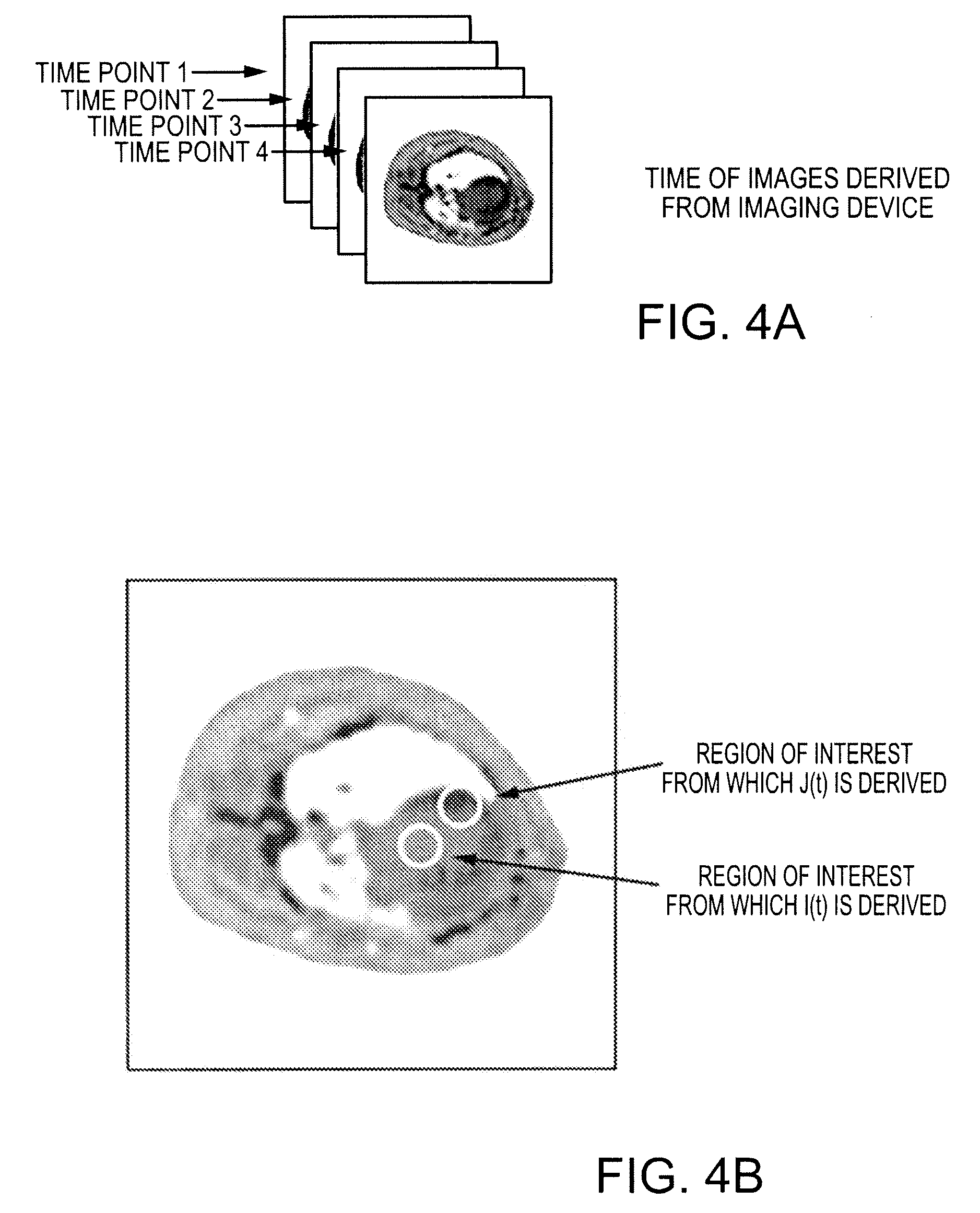Method and apparatus for quantifying the behavior of an administered contrast agent
a contrast agent and behavior technology, applied in the field of medical imaging, can solve the problems of difficult deconvolution analysis, unstable process, and inability to observe the tissue impulse response function r(t) directly, and achieve the effect of reducing the probability of adsorption
- Summary
- Abstract
- Description
- Claims
- Application Information
AI Technical Summary
Problems solved by technology
Method used
Image
Examples
examples
[0067]The most promising MRI technique for perfusion assessment and ischemia detection is rapid MRI of the heart following a bolus injection of a MRI contrast agent, followed by quantitative kinetic analysis of the contrast agent during first pass as described by Wilkie et al. in “Magnetic resonance first-pass myocardial perfusion imaging: Clinical validation and future applications”, Journal of Magnetic Resonance Imaging, Vol. 10, 676-686, 1999. Kinetic analysis often involves compartmentalized modeling, where constraints improve numerical stability but can compromise accuracy and assumptions may break down in pathological conditions as described by Jerosch-Herold et al. in “Myocardial blood flow quantification with MRI by model-independent deconvolution”, Physics in Medicine, Vol. 29, 886-897, 2002. Computer simulations were performed to test the ability of the subject deconvolution technique to estimate perfusion over a clinically relevant range (1-4 ml / min / g) at clinical noise l...
PUM
 Login to View More
Login to View More Abstract
Description
Claims
Application Information
 Login to View More
Login to View More - R&D
- Intellectual Property
- Life Sciences
- Materials
- Tech Scout
- Unparalleled Data Quality
- Higher Quality Content
- 60% Fewer Hallucinations
Browse by: Latest US Patents, China's latest patents, Technical Efficacy Thesaurus, Application Domain, Technology Topic, Popular Technical Reports.
© 2025 PatSnap. All rights reserved.Legal|Privacy policy|Modern Slavery Act Transparency Statement|Sitemap|About US| Contact US: help@patsnap.com



